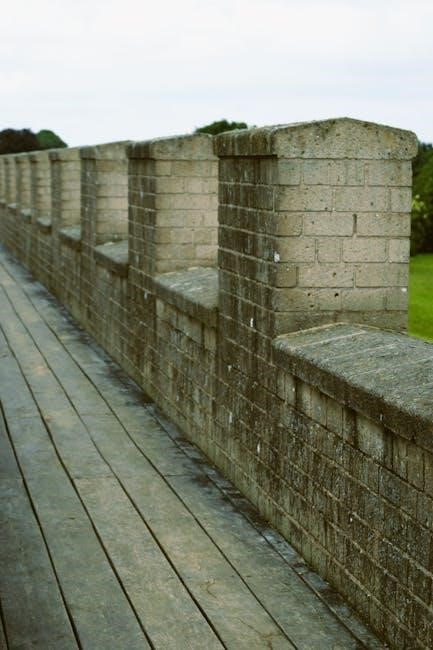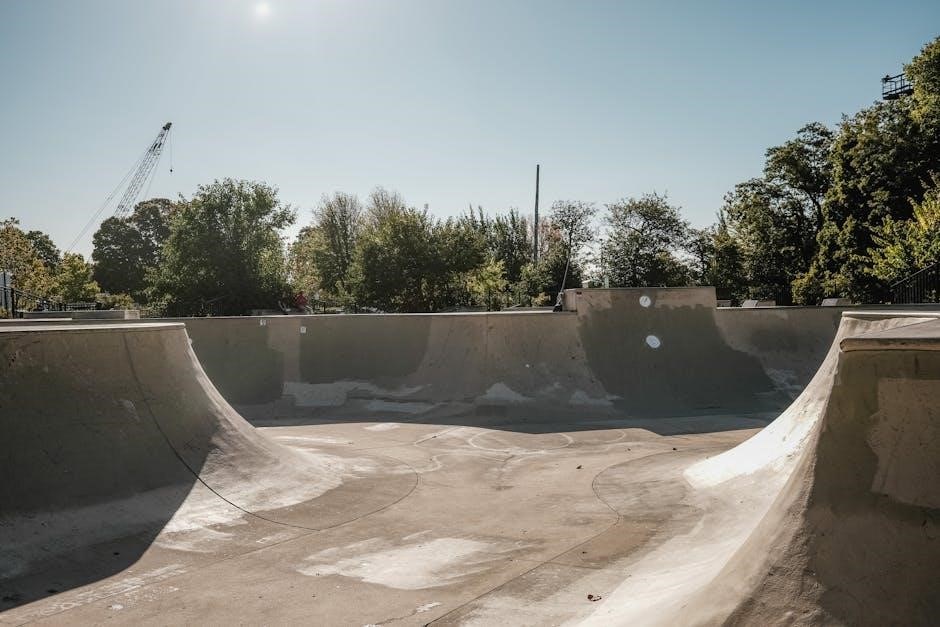
EDH (Elder Dragon Highlander) is a popular Magic: The Gathering format emphasizing strategy, creativity, and fun. This guide provides a foundation for building competitive, thematic decks, focusing on key elements like commander selection, mana optimization, and card synergy. Perfect for both newcomers and experienced players, it offers insights to craft powerful, enjoyable decks while exploring the format’s unique dynamics.
1.1 What is EDH and Its Importance in Magic: The Gathering
EDH (Elder Dragon Highlander) is a casual, multiplayer Magic: The Gathering format where players build decks around a legendary creature or planeswalker, known as a commander. It emphasizes creativity, strategy, and social interaction, making it a beloved format for players of all skill levels. EDH’s importance lies in its ability to foster community engagement, encourage deck-building innovation, and provide a unique, dynamic gameplay experience that blends fun with competitive elements.
1.2 Brief Overview of EDH Deck Building Fundamentals
EDH deck building revolves around a commander, shaping the deck’s strategy and theme. Key fundamentals include a strong mana base with 36-38 lands, card draw for consistency, and targeted removal to interact with opponents. Synergy between cards is crucial, while recursion strategies maximize graveyard utility. Balancing these elements ensures a cohesive, powerful deck. Budget-friendly options and gradual upgrades allow players to refine their builds over time, making EDH accessible and rewarding for all skill levels.
Choosing the Right Commander
Selecting a commander is pivotal, as it defines your deck’s strategy and theme. Choose a leader that aligns with your playstyle, ensuring balance between power and fun, while offering versatility for deckbuilding and in-game adaptability.
2.1 Understanding Commander Synergies and Playstyles
Commander synergies and playstyles are crucial for deck cohesion. Popular strategies include Voltron (buffing a single creature) and combo (infinite loops). Budget-friendly options exist, like using recursion or mill. Playstyles vary from aggressive to control, so choose a commander that aligns with your preferences. Ensure your deck supports its abilities, maximizing interactions for a powerful, enjoyable experience. This foundation sets the tone for a balanced, fun, and competitive build.
2.2 Popular Commanders for Beginners and Experienced Players
Popular commanders like Atraxa, Golgari, and Mardu offer versatility for both new and seasoned players. Budget-friendly options such as Meren of Clan Nel Toth or Lathiel, Blade of the Elves are great for starters. Experienced players often favor powerful synergies with commanders like Yidris or Estrid. These leaders provide a solid foundation for deck building, allowing for upgrades and customization. They cater to various playstyles, ensuring a fun and competitive experience for all skill levels.
Building a Strong Mana Base
A strong mana base is crucial for consistent gameplay. Aim for 36-38 lands, adjusting based on deck needs. Include ramp strategies and mana fixers to ensure smooth casting.

3.1 Lands and Ramp Strategies for EDH Decks
A well-structured mana base is vital for EDH decks. Start with 36-38 lands, adjusting based on the deck’s power level and mana demands. Include essential ramp cards like Sol Ring and Arcane Signet to accelerate mana development. Consider mana-rocks, artifact ramp, and creature-based solutions to ensure consistent casting. Balance utility lands with basic and dual lands to maintain flexibility. A strong ramp strategy enables early-game stability and mid-to-late-game dominance, making it a cornerstone of competitive EDH deckbuilding.

3.2 Balancing Mana Curve for Optimal Performance
Balancing your mana curve ensures smooth gameplay and consistent card deployment. Aim for a mix of low-to-mid mana cost cards to maintain early-game momentum, while including higher-cost cards for late-game impact. Allocate roughly 50% of your deck to 1-3 mana cards, 30% to 4-6 mana, and 20% to 7+ mana. Incorporate ramp strategies to support heavier spells. Adjust the curve based on playtesting to ensure your deck performs optimally at all stages of the game, avoiding mana flood or drought scenarios.
Card Draw and Recursion
Card draw and recursion are essential for maintaining card advantage and enabling powerful plays. These strategies ensure consistent access to resources, fueling your deck’s potential and synergy.
4.1 Essential Cards for Maintaining Card Advantage
Card draw and recursion are vital for sustaining momentum in EDH. Essential cards like Phyrexian Arena, Skullclamp, and Sylvan Library provide consistent card advantage. These cards ensure you maintain a strong hand, enabling strategic plays and adaptability. Additionally, recursion tools like Wheel of Fortune and Patriarch’s Bidding allow you to reuse key spells, maximizing your deck’s potential. Incorporating these staples ensures you stay competitive and resource-rich throughout the game.
4.2 Utilizing the Graveyard for Recursion Strategies
The graveyard is a powerful resource in EDH, enabling recursion strategies to recover and reuse key cards. Cards like Patriarch’s Bidding and Reanimate allow you to bring back crucial spells or creatures. Animate Dead and Necromancy provide ways to recur high-impact creatures. Commanders like Meren of Clan Nel Toth thrive on graveyard interaction, enabling repeat value from your creatures. Leveraging these strategies ensures you maximize your deck’s potential and maintain momentum even after cards are discarded or destroyed.

Removal and Interaction
Removal and interaction are crucial for controlling the board and disrupting opponents. Include targeted removal for creatures, artifacts, and enchantments, alongside board wipes for mass clearance, ensuring adaptability in matchups.

5.1 Targeted Removal for Creatures, Artifacts, and Enchantments
Targeted removal is essential for addressing specific threats. Include a mix of creature removal (e.g., Assassin’s Trophy, Heroic Intervention) and artifact/enchantment removal (e.g., Kolaghan’s Command, Nature’s Claim). These cards ensure flexibility and adaptability, allowing you to answer threats without overcommitting. Budget-friendly options like Putrefy and Disenchant are viable, while premium cards like Force of Will offer superior utility. Balance quantity and quality to maintain consistency across matchups, ensuring your deck can handle diverse strategies effectively.
5.2 Board Wipes and Mass Removal Strategies
Board wipes reset the game, controlling multiple threats at once. Include 2-3 mass removal spells like Damnation or Day of Judgment for creature-heavy boards. Budget options like Crux of Fate or Mass Calcify are effective. Pair with artifact/enchantment wipes like Back to Nature or Bye Bye Inventions. Timing is key; use them when opponents have multiple threats. Balance with targeted removal to maintain flexibility. Premium cards like Austere Command offer versatility, while budget alternatives provide consistency. Adapt your strategy to the meta and deck archetype for optimal impact.

Synergy and Theme
Focus on a central theme or mechanic to enhance deck performance. Synergy between cards amplifies effectiveness, creating a cohesive strategy. Themes like tribal or combo decks thrive when cards interact seamlessly, boosting overall power and enjoyment. Prioritize cards that support your theme for maximum impact and a polished playstyle.
6.1 Building Around a Central Theme or Mechanic
Building around a central theme or mechanic ensures a cohesive and engaging deck. Themes like tribal, combo, or graveyard recursion provide clear direction. Mechanics such as +1/+1 counters or life gain can unify card choices. Start by selecting a commander that embodies your theme, then curate cards that support it. This approach enhances synergy, making your deck more powerful and fun. Examples include Merfolk tribal or a mill-based deck. Choose a theme that resonates with your playstyle for the best results.
6.2 Maximizing Synergy Between Deck Cards
Maximizing synergy between deck cards is crucial for a powerful EDH deck. Focus on how cards enhance each other, creating a cohesive strategy. For example, pair card draw with card advantage engines or use tutors to find key pieces. Ensure your commander’s abilities align with the deck’s theme. A well-structured mana base supports these interactions. Synergy amplifies individual card strengths, leading to a more consistent and enjoyable deck. Prioritize cards that work together seamlessly to achieve your win condition efficiently.

Win Conditions
Win conditions define how your deck achieves victory. Common strategies include Voltron, where creatures deal direct damage, or combo and mill strategies for alternative wins.
7.1 Voltron and Combat-Based Win Conditions
Voltron strategies focus on empowering a single creature, often with equipment or auras, to deal lethal damage. Commanders like Atraxa or Estrid shine in these builds. Combat-based wins rely on overwhelming opponents with creature attacks, using evasion abilities like flying or deathtouch. Enhancing your team with anthem effects ensures consistent pressure. Balancing creature power with protection spells, like Heroic Intervention, is key to safeguarding your threats and securing victory through relentless assault.
7.2 Alternative Win Conditions: Mill, Combo, and More
Alternative win conditions offer creative ways to victory beyond combat. Mill decks, led by commanders like Merfolk Secretkeeper, aim to exile opponents’ entire decks. Combo strategies, such as infinite mana loops with Kydele, Chosen of Kruphix, can end games instantly. Other unique approaches include Level Up synergies or Phasing effects to outmaneuver foes. These methods add variety and excitement, allowing players to win through ingenuity rather than direct confrontation, making EDH a versatile and dynamic format.

The Role of the Sideboard in EDH
The sideboard in EDH allows players to adapt their strategy between games, offering flexibility to address specific metagames or opponent archetypes, enhancing deck performance strategically.
8.1 Understanding When and How to Sideboard in EDH
Sideboarding in EDH is about adapting your strategy between games. It involves swapping cards to address specific threats or metagames. Consider the opponent’s deck archetype and adjust accordingly. For example, include graveyard hate against recursion-heavy decks or counterspells for combo matchups. Timing is key—sideboard after understanding the table’s dynamics. Prioritize cards that complement your deck’s strengths while mitigating weaknesses. A well-tuned sideboard enhances flexibility, ensuring your deck remains competitive in diverse scenarios.
8.2 Key Sideboard Cards for Different Metas
Sideboard cards should be tailored to the metagame. Include graveyard hate like Rest in Peace or Carrion Feeder against recursion decks; For combo-heavy metas, add Torpor Orb or Stony Silence. Board wipes like Damnation or Cataclysm are crucial against token or value decks. Enchantment and artifact removal, such as Kataki, War’s Wage or Qasali Pridemage, are versatile. Adapt your sideboard to address common threats, ensuring flexibility and resilience in varied play environments.
Upgrading Your Deck on a Budget
Identify key upgrades for power and consistency while exploring budget-friendly alternatives. Optimize your mana base and prioritize high-impact cards to enhance performance without overspending.
9.1 Identifying Key Upgrades for Power and Consistency
Start by evaluating your deck’s core components, focusing on lands, card draw, and removal. Prioritize upgrades that enhance mana consistency, such as adding utility lands or ramp spells. Include 10-12 card draw sources to maintain advantage and 6-8 targeted removal spells for flexibility. Consider high-impact creatures or artifacts that align with your strategy. Always test upgrades in play to ensure they improve performance without disrupting synergy. This approach ensures gradual, meaningful improvements to your deck’s power level.
9.2 Budget-Friendly Alternatives for Expensive Cards
Identify expensive staples in your deck and explore budget-friendly alternatives. For example, replace Flooded Strand with Circuitous Route or Kodama’s Reach for ramp. Prioritize upgrading lands and card draw, as they heavily impact consistency. Use platforms like Scryfall to find cheaper versions of key cards. Gradually invest in upgrades as your budget allows, ensuring each addition enhances performance and aligns with your deck’s strategy. This approach helps maintain competitiveness without overspending.

Playtesting and Iteration
Playtesting is crucial to identify strengths and weaknesses. Observe performance during games, refine card choices, and adjust strategies to enhance deck consistency and effectiveness over time.
10.1 The Importance of Playtesting Your EDH Deck

Playtesting is essential to evaluate your deck’s performance in real games. It reveals strengths, exposes weaknesses, and highlights areas needing improvement. By observing how cards interact and synergize, you can refine your strategy and ensure the deck functions as intended. Regular playtesting helps identify inconsistent cards, mana issues, and win condition effectiveness, guiding iterative improvements for a more polished and enjoyable deck.
10.2 Iterating on Your Deck Based on Performance
Iteration is crucial for refining your EDH deck. After playtesting, analyze which cards underperform or disrupt the deck’s flow. Replace inefficient cards with more impactful alternatives, ensuring they align with your strategy. Adjust the mana curve if needed and fine-tune synergies. Regular iteration enhances consistency, power, and fun, helping your deck evolve into a cohesive, competitive force that adapts to changing metas and playstyles.
Advanced Tips for Competitive EDH
Optimize your deck for high-power play by refining strategies, adapting to metas, and ensuring maximum card efficiency. Advanced techniques elevate your deck’s competitive edge and performance.
11.1 Tuning Your Deck for High-Power Play
For competitive EDH, focus on optimizing your mana base and refining strategies to dominate the meta. Prioritize high-impact cards like tutors and interaction spells to maintain control.
Playtest extensively to identify weaknesses and trim less effective cards. Adapt your deck to counter popular strategies while staying true to your commander’s strengths. Budget upgrades can enhance power without breaking the bank, ensuring long-term viability and flexibility in competitive environments.
11.2 Advanced Strategies for Meta Domination
To dominate the meta, adapt your deck to counter prevalent strategies while maintaining flexibility. Focus on versatile cards that offer multiple benefits, ensuring resilience against varied threats.
Leverage sideboarding effectively, swapping cards to exploit weaknesses in popular decks. Stay proactive, anticipating opponents’ moves and disrupting their plans early. Continuous refinement and adaptability are key to maintaining a competitive edge in high-power EDH play.
Building an EDH deck is a rewarding journey of creativity and strategy. Start simple, upgrade thoughtfully, and playtest often to refine your deck. Happy brewing!
12.1 Final Thoughts on EDH Deck Construction
EDH deck construction is a blend of creativity and strategy, offering endless possibilities. Whether focusing on power, theme, or fun, the format encourages experimentation. Start simple, gradually upgrade, and always playtest to refine your vision. Embrace the journey, as building a deck is as rewarding as playing it. With patience and practice, you’ll craft a deck that reflects your unique style and dominates the table.
12.2 Encouragement to Keep Building and Experimenting
EDH deck building is a dynamic process that evolves with each game. Don’t be afraid to try new strategies or adjust your deck based on performance. Every loss is a lesson, and every win is a celebration of your creativity. Keep experimenting, explore different themes, and embrace the community’s shared passion. The true magic lies in the journey, so continue crafting, tweaking, and enjoying the endless possibilities EDH offers.